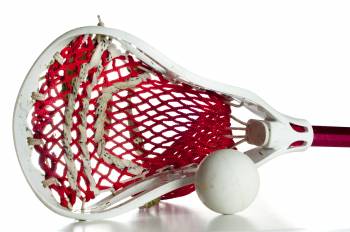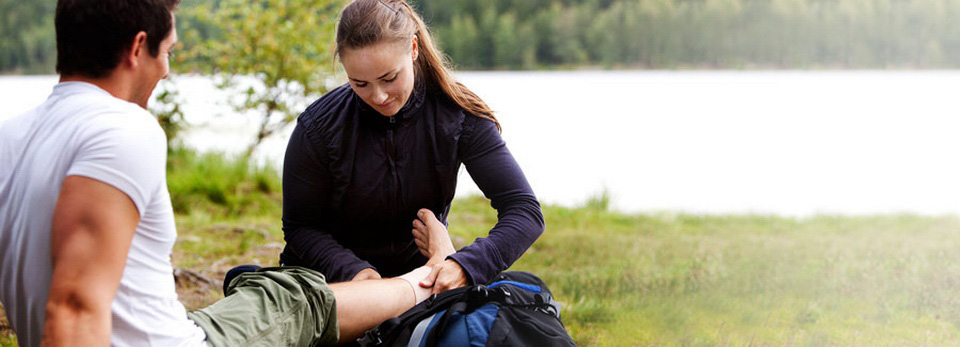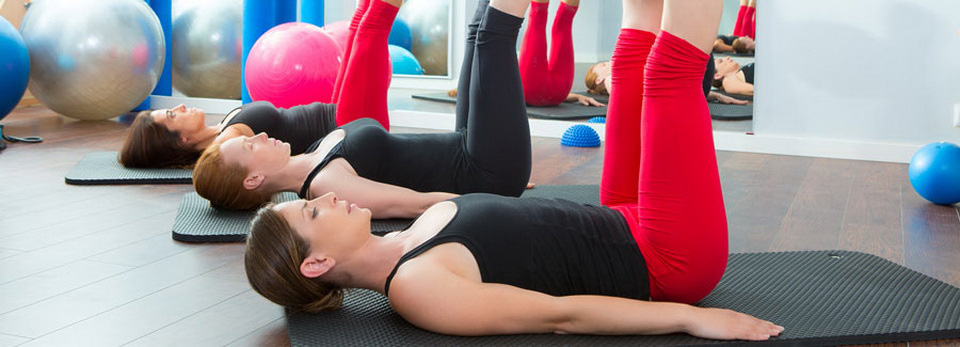Physiotherapy in Beamsville for Lacrosse
Welcome to Beamsville Physiotherapy's guide for selecting lacrosse equipment. We recommend a few general considerations when selecting your equipment in order to stay comfortable and minimize injury while playing lacrosse. Due to men's lacrosse being considered a contact sport, where body and stick checking are allowed and are part of the game tactics, men have different mandatory equipment requirements for play. Women's lacrosse on the other hand, is considered non-contact; contact between players is only incidental. For this reason, women are not required to wear equipment such as helmets or chest pads, which are required in the men's game.

Helmet: A helmet is a mandatory piece of equipment for men's lacrosse, but is only mandatory for the goalie in women's lacrosse. The lacrosse helmet is made of hard plastic and is required to have a metal facemask as well as a chin strap for regulation play. The inside of the helmet is lined with pads that, as in any sport, help to disperse the force of a blow as well as create a comfortable fit for the head. Some helmets have a removable lining that can be taken out to wash. A well-fitted chin strap will be the final factor in securing the helmet adequately on the head. A goalie's helmet is fitted with a throat protector. It is extremely important to buy a good quality helmet as this is the only protection you will have if the ball, a stick or another player contacts your head, and it may be the difference between a bump to the head and a serious concussion. Consulting with a good sports sales rep that is familiar with lacrosse helmets is essential when purchasing a helmet. Most importantly, ensure that the helmet you choose fits comfortably and snug, and does not move around as you move your head. If your helmet gets damaged in any way, including damage to the inner padding, replace it immediately as it will no longer provide adequate protection according to the manufacturers design and specifications.
Eye Protection: Eye protection is probably the most important piece of equipment required for women's lacrosse. Men are required to wear a helmet with a face mask that protects the eyes, but as women's lacrosse is a comparatively non-contact sport, helmets are not required but eye protection is. The eye protection used in women's lacrosse looks more like a small cage around the eyes rather than simple glasses or goggles. There are several nationally approved brands of eye protection so checking with your national lacrosse association is a good starting point when choosing your eye protection. A highly trained sports equipment salesperson can be invaluable for advice when purchasing your eye protection. Whichever eye protection you choose, ensure that it feels comfortable and fits snugly at the back of your head and on your cheek bones. Your peripheral vision should not be obstructed by your eye protection. Although it is not recommended to wear your eye protection over your prescription glasses if it can be avoided, a few brands of eye protection are designed for this so if you must wear them over your glasses, be sure to confirm that they are designed to be worn this way before purchasing.
Mouth Guard: Mouth guards are designed to absorb some of the impact from blows to the jaw and teeth and are mandatory in any competitive play. Not only do mouth guards protect your teeth and jaw, but they also help to protect against a more severe concussion as they absorb some of the shock forced through your skull when your head is hit. It is mandatory that the mouth guard in lacrosse is visible at all times, so choosing a clear mouth guard is not advisable. Standard mouth guards are available in most sporting stores, but they tend to be bulky and do no provide good protection due to their inability to mold to individual teeth configurations. A do-it-yourself moldable plastic mouth guard is also generally available in sporting stores and is a better alternative to the standard mouth guard. These types of guards are made from a soft moldable plastic that can be melted in hot water and then placed in the mouth so that they mold to the individual shape of the teeth. These moldable guards can still feel bulky and therefore may interfere with breathing, however, they are recommended above the standard guard. If you are an avid lacrosse player, it would be worthy to get a custom-fitted mouth guard to provide maximum protection. Custom-fitted guards are made by a dental professional and molded from a special shock absorbing material. Custom mouth guards mold exactly to the individual player's mouth anatomy and therefore provide maximum protection.
Protective Pads: Shoulder pads and arm/elbow pads are mandatory for men's lacrosse. Chest/rib padding is optional but many players choose to wear them depending on the position they play. Again, due to women's lacrosse not being considered a contact sport, women are not required to wear any pads, except for the goalie who must wear a chest protector and has the option of wearing other padding as well. When fitting any padding, be sure it fits snugly and allows you to move as freely as you can while still protecting the intended area. Shoulder pads are meant to protect both the shoulders and the upper chest, so ensure they are fit well around these areas. Arm/elbow pads should extend down to meet the gloves in order to provide maximum protection and should be able to be tightened enough so that they don't slip down the arm while playing. As with all equipment, if you can bring your stick and try a few practice shots in the shop while trying out different padding, it will provide you will valuable information you can factor in when finally deciding to purchase.
Gloves: Gloves are mandatory in men's lacrosse, but not in women's lacrosse. However, in order to protect the hands and wrists from the common contusions, lacerations, and fractures, gloves are also highly recommended for women. Lacrosse gloves have heavy padding on the top of the fingers and across the wrists mainly to protect the hands and wrist from contact with other player's sticks. Most gloves are made with a nylon and leather outer shell and a combined leather and mesh palm. As with any glove, the better the fit, the less chance of wrist and elbow strain injuries due to over-gripping in order to keep the glove in place. Comfort is of utmost importance, so trying a variety of different gloves until you find one that feels snug and comfortable is best. If you are able to bring your lacrosse stick with you to try out with potential gloves, this would be wise to ensure you can adequately grip the handle. It is also wise to purchase gloves that provide good ventilation as excess sweat inside the glove can make it hard to grip and be uncomfortable for the length of a game. As new gloves can be somewhat stiff when first purchased, you should try to practice as often as possible with the new gloves and wear them in. This again will allow you to grip your stick more efficiently without over-gripping. As with any piece of equipment, once the gloves begin to wear out and show signs of the palm wearing through, it is time for a new pair as they are no longer providing the protection they were built to provide and will also be adding to the potential of strain injuries.
Jockstrap & Cup/Athletic Supporter: This is an extremely important piece of equipment for males in any contact sport and lacrosse is no exception. The jock or athletic support provides solid protection to the genitalia which in turn reduces the number and severity of injuries incurred due to impact to this area. It should be well fitted and feel comfortable when running and squatting. If possible, try your supporter with whichever underwear you normally use to play in to ensure they fit comfortably together.
Cleats: As in many sports metal cleats are forbidden so be sure to purchase shoes with plastic cleats. There are special lacrosse shoe designs, but if you are not an avid player or are just beginning, other sporting shoes with cleats, such as those used for soccer will suffice, or a regular athletic shoe is also allowed. Most lacrosse is played on natural surfaces so a longer cleat is advisable in order to deal with a potential muddy or wet field. Artificial turf is becoming more popular, however, and a shorter cleat is best for this surface. If you are playing indoor lacrosse, depending on whether the indoor surface is covered with turf or not will dictate whether you need cleated shoes or not. Regular court shoes for indoors, such as those made for basketball, will suffice if there is no turf. Both low-cut and high-top varieties of lacrosse cleats are available. Comfort should be the biggest deciding factor, however, if you have had a history of ankle sprains, high-tops do provide extra support for the ankle so would be the recommended choice.
Socks: Blisters are common in any sport, but you can avoid them by both choosing the correct shoes (see above) as well as the correct socks. Blisters are caused by repetitive friction, heat, and moisture, so minimizing these factors will decrease your chance of developing them. Choose a sock that is form fitting (not tube socks) and one that is made with a breathable and moisture-wicking material. Ensure the sock fits very well as any slipping will cause excess friction. Some lacrosse players choose to wear two pairs of socks so any friction that does occur happens between the two layers of socks rather than against the skin. Lastly, ensure any hotspot (area that feels like a blister is starting) is tended to IMMEDIATELY. Avoiding blisters is much easier than treating them once they occur.
Stick: The traditional lacrosse stick was made of wood, but with modern technology the stick shaft of most men's sticks is now made with a metal handle of a lightweight material such as aluminum, graphite, or titanium. Some women's sticks are still constructed of wood. The handle can be either round or square and your choice depends on comfort. Because the shaft is hollow the butt end of the stick is covered with either tape or a rubber plug. A plastic mold creates the head of the stick. The head of the racket is strung with nylon or leather strings to create a pocket where the ball is carried. Interestingly, the pocket for a men's stick can be strung with either nylon mesh or leather, but according to regulation, women's sticks are only allowed to be strung with leather. The regulation dimensions of both the men's and ladies' stick lengths and pocket depths are strictly set so as not to allow an unfair advantage in lever arm or the ability to trap the ball, however, there is some variability within these regulations so you can choose a stick length or pocket depth that matches your style of play. For instance, a deeper pocket will allow more ball control and a shallower pocket will allow a quicker release. Women's pockets are shallower than mens, which makes it harder to throw at a higher velocity, and a goalie's stick pocket is larger than any of the other players. Choosing a length for your stick will nearly entirely depend on the position you play; defenders typically choose longer sticks for more reach, and attackers choose shorter sticks for more maneuverability. Midfielders will choose something in between. If you are new to the sport, it is wise to choose a stick in the mid range of all specifications until you get a feel for the ability to handle the stick and know your own style of play.
Ball: The lacrosse ball is a standard ball made of rubber and is made to specific requirements. Color, however, may vary and can be white, yellow, or orange.
Hydration Gear: Keeping hydrated during any activity will help you stay alert while training or competing, may help to prevent muscle cramps and will help your post-training or competition recovery. Lacrosse is no exception. If you use your own drink bottles rather than drinking from communal bottles you can easily monitor your fluid consumption and also avoid transmission of bacteria. We recommend that you drink about 350-450 mL before arriving at a game (ref: http://www.epysa.org/pdf/Heat_Hydration_Guidelines.pdf), and 250mL (1 cup) of water or sports drink every 20 minutes during the game (ref: http://www.ausport.gov.au/sportscoachmag/nutrition2/pre-event_nutrition) and for one hour after the game. Your fluid requirements will vary, of course, depending on the environmental conditions and your body size.







